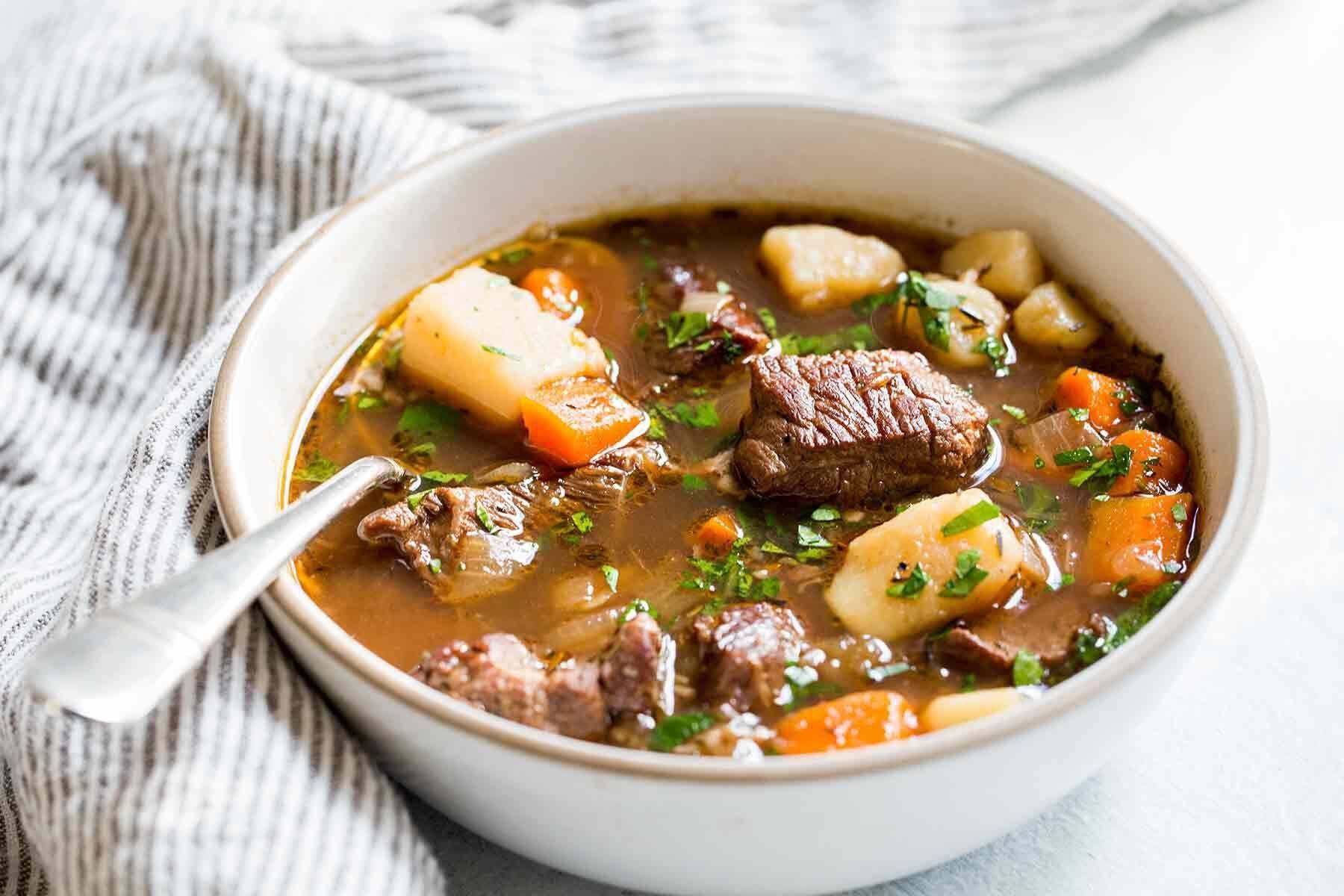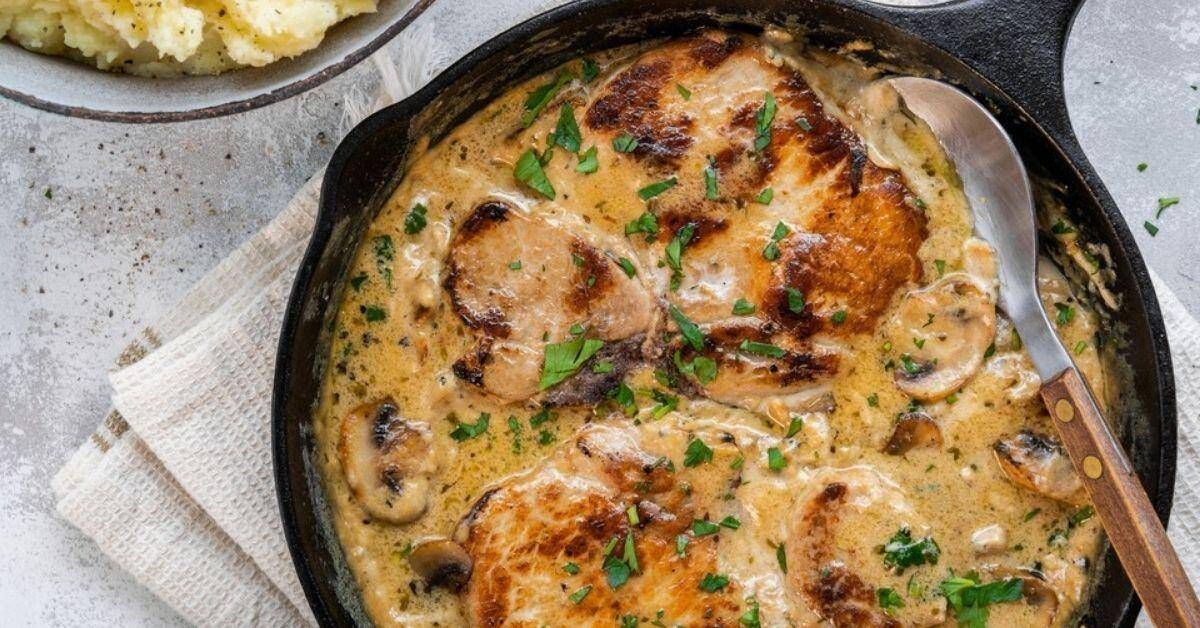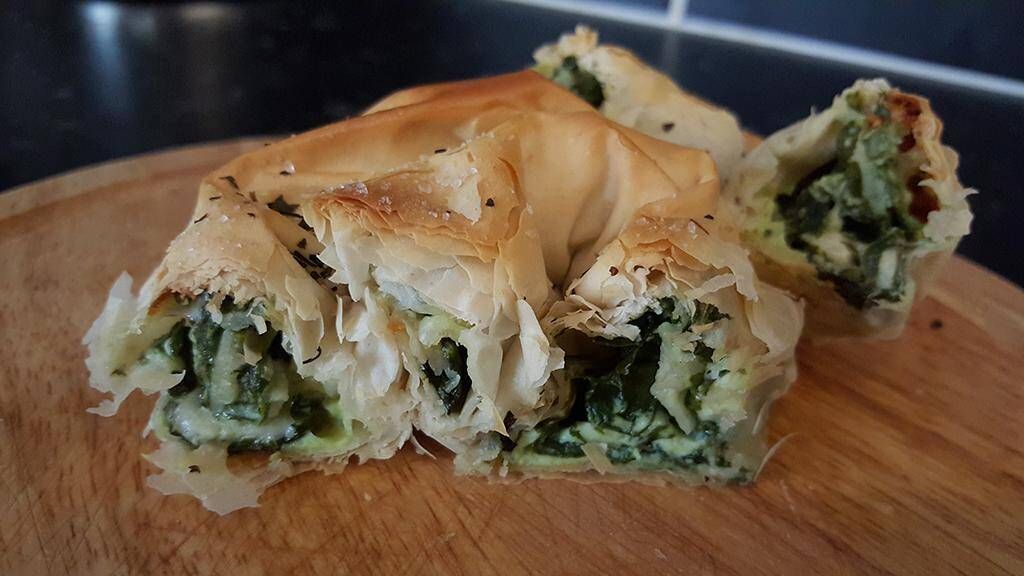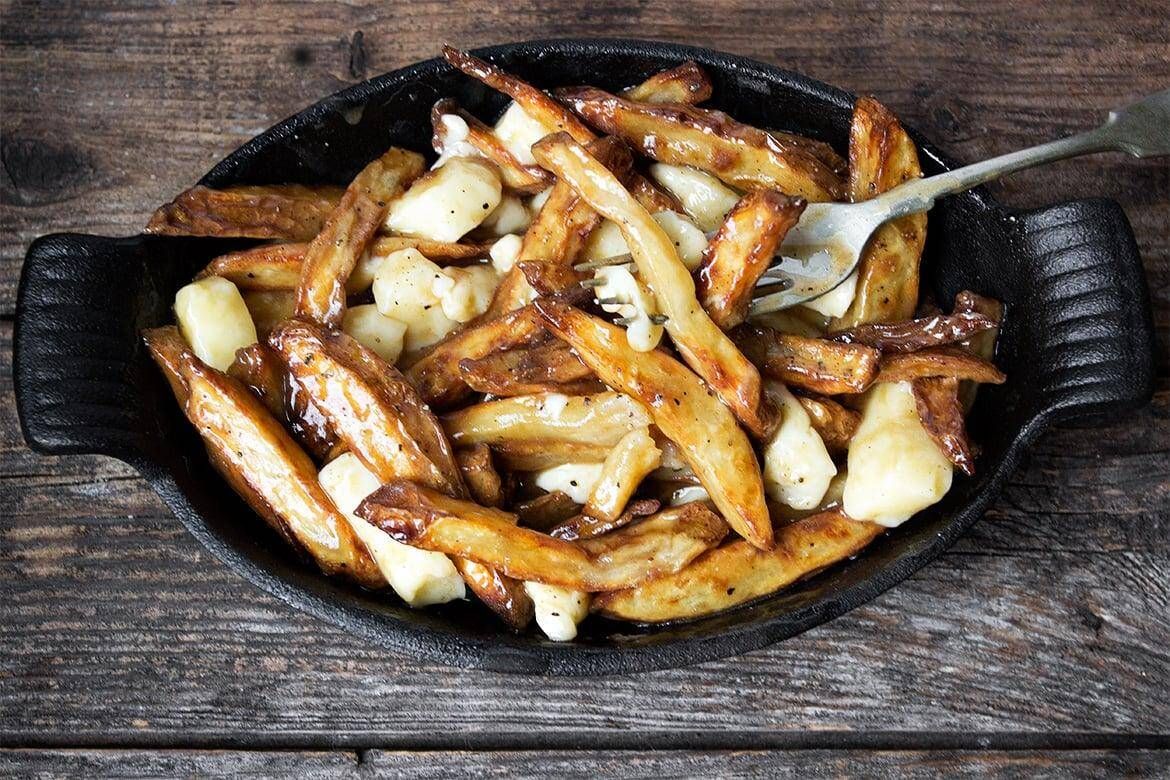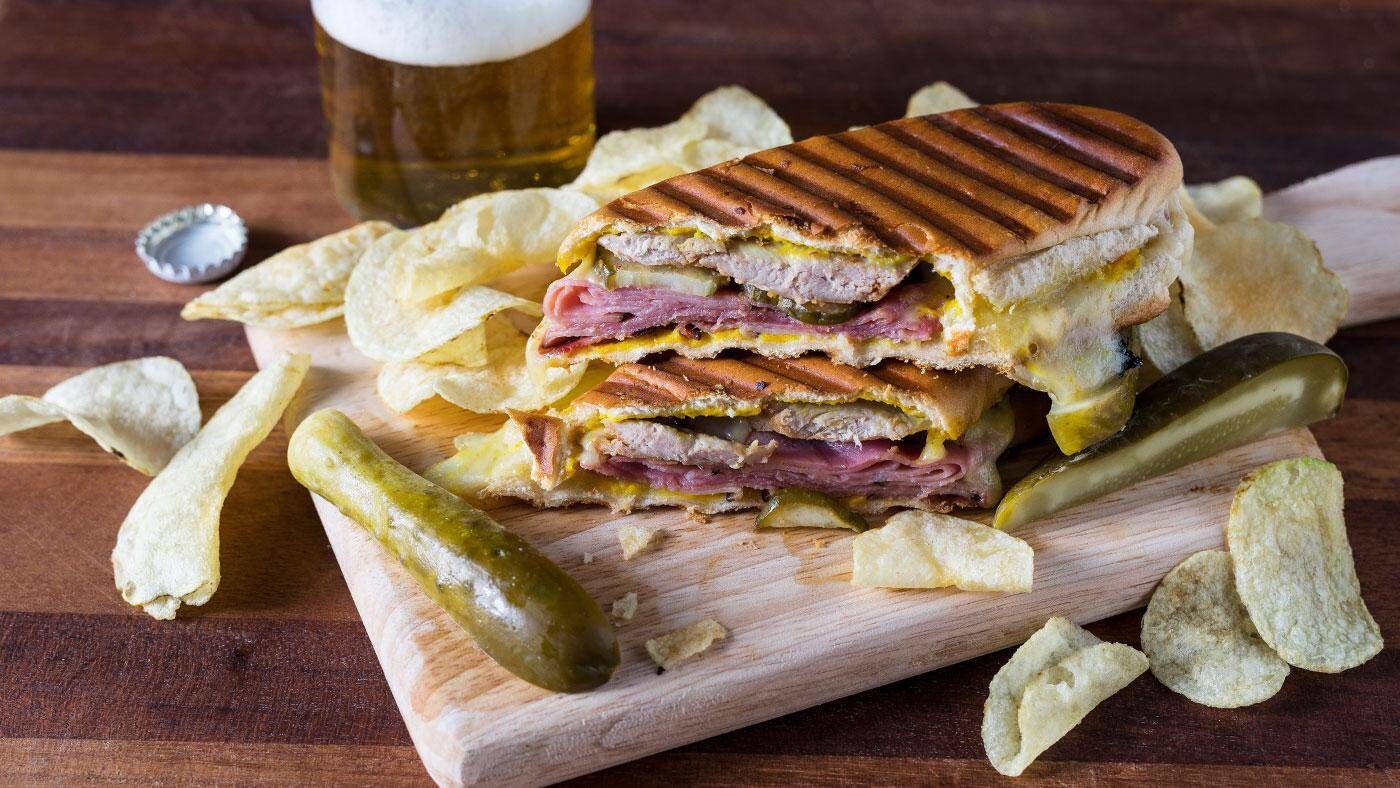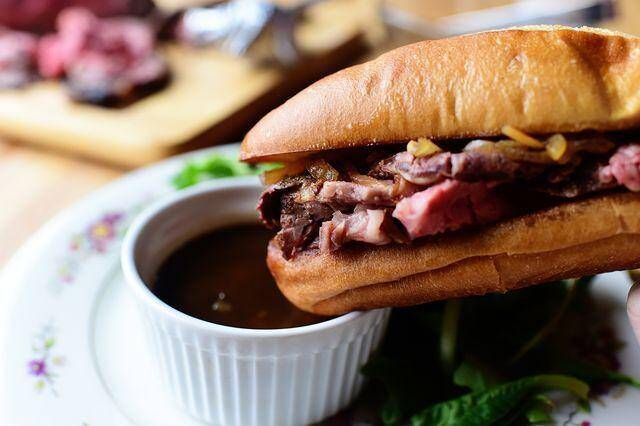WHAT IS POUTINE?
As a Canadian, it’s seriously shocking to me when someone asks “what’s poutine?” I need to remind myself that not everyone has been blessed enough to enjoy this dish for most of their life. So let me explain to you what you’ve been missing out on!
Poutine is a dish that originated in Quebec back in the 1950’s. I’ve heard stories of a man asking a restaurant to add cheese curds to his fries, that said restaurant later added to their menu. A couple years later, the restaurant served these fries and cheese curds on a plate, then added gravy to keep them warm. This, my friends, is what we call Poutine!
Now that’s just one of many origin stories, but just like with the Nanaimo Bars, no one really knows how it truly originated. Either way, I’m glad it did because this is one of my most favourite dishes ever!
Poutine has always been popular in Canada, but it’s grown even more in popularity over the past few years. Pretty much every restaurant that has fries, has included a poutine variation onto their menu, even McDonalds!
Now if you don’t live in Canada, you’re probably not gonna find poutine in every corner of your city. Well today I’ll be showing you how to make your own poutine that tastes just as good (and dare I say BETTER) than the ones at the restaurants!
PEELING AND CUTTING THE FRIES
Alright, let’s start with the fries! You’ll need 4 pounds of Russet potatoes, preferably all the same size. A lot of people like to keep the skin on their potatoes when making fries or wedges, so if you do, wash your potatoes before slicing. I don’t like the skin, so I run the potatoes under cold water while peeling.
To cut the potatoes into french fry sticks, start by slicing your potato into ¼-inch thick “disks”. Then slice each disk into sticks. See the photos below to better understand what I’m talking about.
As you’re cutting your fries, place them into a large bowl or container filled with cold water. You’ll want to do this right away as the potatoes will start to brown if left out too long. Once all of your fries are in the cold water, cover and refrigerate overnight. This is important because it removes the starch which results the crispiest fries!
FRYING THE FRENCH FRIES
Before frying, you’ll need to drain the starch water from the fries, then rinse them TWICE to make sure all the starch is gone. After the fries have been rinsed, dry them as well as you can. Water and oil is not a good mix, so after you place them on paper towel, use another sheet or two to dry them a handful at a time before adding to the oil.
Fill a very deep pot with 3-inches of oil, then heat it to 300°F. I used a thermometer, but you can test it by adding a small fry after a few minutes, and once it begins to fry gently, the oil is ready.
You’ll be frying the fries twice, once at 300°F for 4-5 minutes to cook the inside, then again at 400°F for 3-5 minutes to get a golden brown crispy outside.
TIPS FOR FRYING THE FRIES
Use a large deep pot: Since we’ll be deep frying, we need a lot of oil. Like enough to go 3-inches up your pot, so you’ll need a pot that’s at least 6-inches high or more, because once the fries are added, the oil will rapidly bubble up and you wanna make sure there’s enough room so it doesn’t spill over.
Fry in small batches: There’s a lot of fries, so you may be tempted to fry a ton at once to get it over with but DON’T! The first time I fried french fries, I accidentally added too many fries to the pot and the oil bubbled up, spilled over, and set the entire pot on fire. Yes, it’s THAT dangerous! I was able to put it out without problem and continue frying, but it could’ve ended way worse so please fry in very small batches to avoid this.
Don’t leave the pot: Pay close attention to the fries when frying. Even though I gave you a time, this is the time it took ME to fry. Things may end up differently for you, especially with the second fry. Some batches took 3 minutes to reach the golden crispy stage, while other batches took 5 minutes or more which is why the time is 5-3 minutes. Once you see the fries getting brown and crispy, take them out. You don’t want them to burn.
WHAT KIND OF CHEESE SHOULD I USE?
White cheese curds is the cheese used in every authentic Canadian poutine! Once again, poutine is so popular here that our grocery stores specifically sell “poutine cheese curds”.
CHEESE CURD SUBSTITUTIONS
Alright, chances are you’re probably gonna have a hard time finding cheese curds so a great substitution is a ball of soft mozzarella torn into chunks. The type of mozzarella you can’t use a shredder for, I use this soft mozzarella every time I make lasagna! When adding the gravy, the cheese is supposed to get melty and gooey, only soft, torn pieces of mozzarella can give you similar results.
Speaking of the cheese curds, one thing that’s always annoyed me is how much some restaurants skimp on the curds! Like a bucket of fries with 3-4 cheese curds, ridiculous! So now that I have full control over my curds, I went a bit crazy and added 2 full cups :D.
HOW TO MAKE POUTINE GRAVY
The GRAVY! This is what ties the whole dish together. The gravy can make or break a good poutine. For instance, Popeyes has amazing fries, and the cheese curds made them better, but their poutine gravy did not taste great to me so after the first try, I never bought it again.
So if you’ve got bad gravy, you’ve got bad poutine.
That’s why I was so nervous the entire time I was making this gravy. Thankfully it turned out AMAZING! I’m talking dip your already gravy-soaked fries into a side bowl of more gravy, amazing!
Making the gravy is very simple. Start by making a roux, which is butter and flour cooked together on the stove. Once the roux is bubbling, slowly pour in the beef stock. You can substitute with chicken stock, but you’ll end up with a very light gravy when poutine gravy is supposed to be dark. The beef stock will also give the gravy a better flavour.
For additional flavour, you’ll add ketchup, Worcestershire sauce, salt and pepper. Whisk everything together and let it come to a boil. Pour in a cornstarch slurry (water + cornstarch combined) into the gravy and whisk until it’s incorporated. Let the gravy bubble and boil until it’s thickened. From there, you can taste the gravy and adjust the salt and pepper to your liking.
Now immediately pour the gravy onto the fries and cheese curds while it’s hot! The main purpose of the gravy is to melt the cheese curds into the fries so everything becomes one deliciously gooey mess!
If you’ve never tried it please make sure to ask for it when you travel to Canada
spotted in www.queensleeappetit.com








